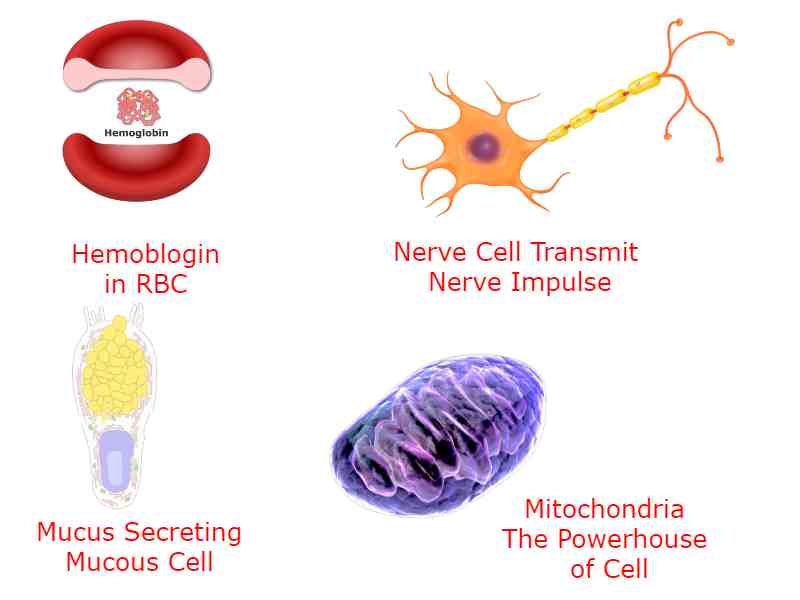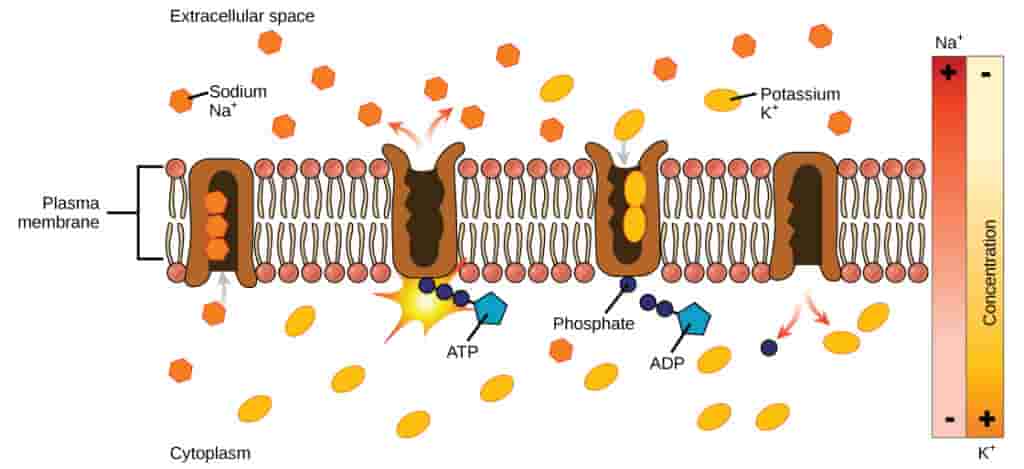Hi, we have already discussed all major important organelles in a cell and the structure and function of a cell wall, now we are going to discuss characteristics of a living cell along with the discovery of the cell.
Table of Contents
Basic Introduction About Cell:
If we try to understand how living systems show different properties of living characters then the answer is the cell which is responsible for different properties of living systems so we can say that a cell is the structural and functional unit of an organism.
An organism can multiply, it is only possible for the special features of a cell to divide and cells in a multicellular organism have different functions and according to their functions cells show great variation in their shape, size, for example, the nerve cell and our RBC is not same in structure and function.
The number of cells in different organisms can be a single cell or may be made of numerous cells and they show great variation in their products also, for example, our RBC contains a special chemical known as hemoglobin which can transport oxygen but it is not available in others cells in our body, our nerve cell can transmit neural impulse but other cells can not while mucous cell can produce mucus which is not common in other cells in our body.

The first cell was observed by Robert Hook who actually observed a dead cell in the cork so he was not able to see the cytoplasm of the cell, he only observed the outer part of living tissue containing the cell wall and middle lamella so it was looking like some porous chamber.
Then other scientists observed different plant and animal cells and finally gave their popular cell theory which revealed the different characteristics of living cells and we will discuss different characteristics features of a living cell.
Characteristics Features of a Living Cell:
- In a house, bricks are the building blocks of the house as well as in a living organism the living cell is the building block of the organism and each property and function of the whole living organism is the combined results of all living cells present in the organism.

- In a cell, numerous biochemical reactions occur each moment by no one biochemical reactions is affected by other biochemical reactions and it is possible due to different chambers created in a living cell due to the presence of different membrane-bound cell organelles and each cell organelles which are membrane-bound act like different rooms in a house.
- Every time the cell performs any activity like any metabolic reaction, cell growth, production of any chemical, cell division, response to external stimulation all are determined by the genetic information present in the nucleus in the form of DNA.
- Cells have different mechanisms to digest any biochemical inside a cell and a membrane-bound cell organelle lysosome which is responsible for those actions and the lysosome contains different types of hydrolytic enzymes which can break down all types of biochemical inside the cells.
- Cells have a special structure to meet the required energy for different cellular activities and the structure is mitochondria which can perform a special series of biochemical reactions which make the cell independent of the energy.
- Cells can identify different chemicals which are useful for them and which are harmful to them and this power of cell is due to its highly specialised structure cell membrane which can accurately identify necessary substances and only allow them to cross the cell membrane and prevent the entry of other harmful substances across the cell membrane.

- In cell different biochemical reactions occur in fractions of a second but if the reaction takes place outside the living cell then it can take much more time but it is possible due to the catalytic activity of enzymes and the cell can produce the enzyme during requirements but here the DNA expression is required and mRNA is produced by the method of transcription then the mRNA is decoded by the ribosome and the ribosome join different amino acids in the correct sequence to make a proteinaceous enzyme.
Reference:
- Characteristics of A Living Cell
- https://sciencing.com/living-cell-characteristics-7464841.html
- https://bio.libretexts.org/Courses/Manchester_Community_College_(MCC)/Remix_of_Openstax%3AMicrobiology_by_Parker_Schneegurt_et_al/03%3A_Microscope_and_the_Cell/3.03%3A_Spontaneous_Generation
- https://www.nature.com/scitable/ebooks/essentials-of-cell-biology-14749010/what-is-a-cell-what-are-the-14751770/
| Cell Cycle and Cell Division |
| Important Cell Organelles in a Living Cell |
| How Cells Communicate with Each Other |
| Structure of Animal Cells |
| Structure and Function of Cell Wall |
How a Living Cell Meets it Metabolic Energy?
In a living cell different biochemical reactions are going on and they need metabolic energy, energy is stored inside the cell as an ATP molecule. Mitochondria are responsible to release the metabolic energy inside a living cell during the oxidation of respiratory material the energy is released when ATP breaks down.
How does a Living Cell respond to External stimuli?
A living cell can understand its surroundings through different receptors present on its plasma membrane and give the corresponding stimuli. The cell membrane can detect which chemicals are useful and which one is harmful to the cell, membrane protein help to recognize them, and thus the cell membrane controls the import and export of different biochemicals across the cell membrane.
Why Cells are Called as Structural and Functional Units of Life?
In a living system, all the character we observe and consider as a trait of a living organism is actually combined effect of cellular metabolism. For example, in the liver, the functionality of the liver can be explained by the function of liver cells, and the liver tissue is made of liver cells and the structure below the cellular level can not explain the all activity of a living organism.
How do Different Cells Perform Different Functions in a Living Organism?
In a higher organism, different cells are specialized for different functions, it is possible due to the differentiation process which makes a cell suitable for a specific function. For example, RBC can carry oxygen due to the presence of hemoglobin, nerve cells can transmit nerve impulses, goblet cells can secret mucous.
How Living Cells Can Complete Biochemical Reactions So fast?
In living cells, different biochemical reactions are going on every moment simultaneously and they complete within a fraction of seconds. But if we try to perform those reactions outside cells then it can take a very long time, enzymes inside a cell are biocatalysts which helps to complete the biochemical reaction in a living cell very fast.
Is Growth an Important Characteristic of a Living Cell?
Living cells show growth due to an increase in their cytoplasmic materials but it is not a mandatory character of a living cell because cell growth may not occur due to different reasons. So growth is not a defining character of a living cell it is just a characteristic of a living cell.
Is Reproduction is an Important Characteristics of a Living Cell?
Living cells multiply themself by different methods of reproduction but they may be absent in a living cell. Due to any reason, a cell can not show reproduction but it does not mean that the cell is not living, after a certain stage a cell can be lost its reproduction ability, and then yet the cell is living.
Is Metabolism is an Important Characteristics of Living Cells?
Yes, metabolism is a very important feature of a living cell because without cellular metabolism it is impossible to sustain the existence of a living cell. Cell meets its energy requirements through metabolic reactions and almost all the activity inside a cell requires metabolic energy less or more.
Is development is An Important Character of a Living Cell?
Development is a process that occurs inside a cell throughout its lifespan, so we can say that it is an important character of a living cell. Development is a continuous process in a living system that happens inside it from its origin to its death and every change that happens inside a living cell is due to development.
How Different Activity of a Cell is Controlled?
In a cell, every activity is controlled by different metabolic reactions, and all the metabolic reactions are controlled by genetic materials present inside the nucleus. Because all metabolic reactions need specific enzymes and the enzymes require genetic information and all the genetic information present in the DNA.
Hi Everyone!!! Welcome to Imaluop. Imaluop always try to learn some new and he want to share to other people. Here we will try to learn various topics on Science, specially on Biological Sciences.